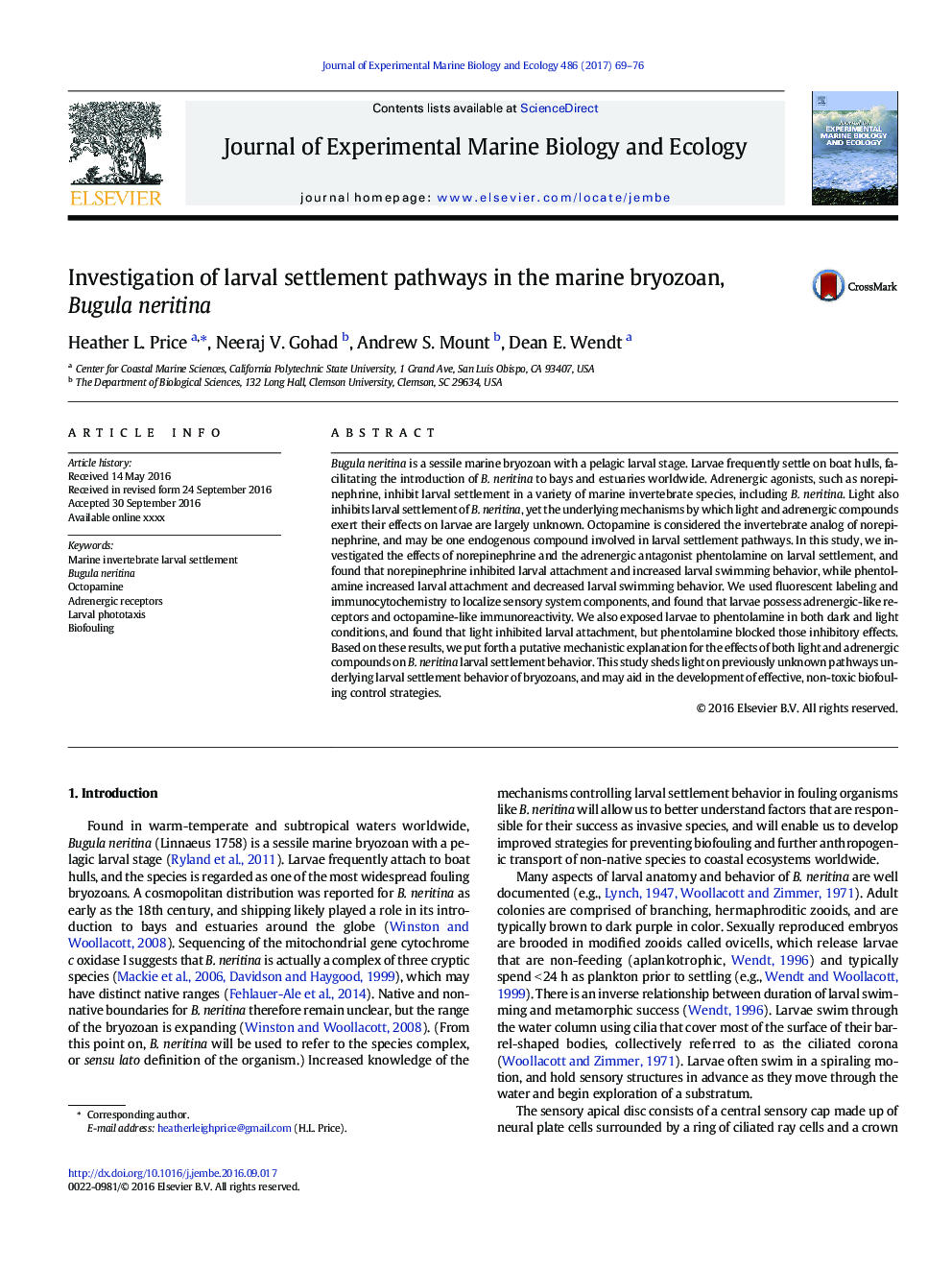| Article ID | Journal | Published Year | Pages | File Type |
|---|---|---|---|---|
| 4395167 | Journal of Experimental Marine Biology and Ecology | 2017 | 8 Pages |
•Norepinephrine inhibits B. neritina attachment, while phentolamine augments it.•Norepinephrine increases swimming behavior, while phentolamine decreases it.•B. neritina larvae possess adrenergic-like receptors.•B. neritina larvae possess endogenous octopamine-like immunoreactivity.•Phentolamine reduces the inhibitory effects of light on B. neritina attachment.
Bugula neritina is a sessile marine bryozoan with a pelagic larval stage. Larvae frequently settle on boat hulls, facilitating the introduction of B. neritina to bays and estuaries worldwide. Adrenergic agonists, such as norepinephrine, inhibit larval settlement in a variety of marine invertebrate species, including B. neritina. Light also inhibits larval settlement of B. neritina, yet the underlying mechanisms by which light and adrenergic compounds exert their effects on larvae are largely unknown. Octopamine is considered the invertebrate analog of norepinephrine, and may be one endogenous compound involved in larval settlement pathways. In this study, we investigated the effects of norepinephrine and the adrenergic antagonist phentolamine on larval settlement, and found that norepinephrine inhibited larval attachment and increased larval swimming behavior, while phentolamine increased larval attachment and decreased larval swimming behavior. We used fluorescent labeling and immunocytochemistry to localize sensory system components, and found that larvae possess adrenergic-like receptors and octopamine-like immunoreactivity. We also exposed larvae to phentolamine in both dark and light conditions, and found that light inhibited larval attachment, but phentolamine blocked those inhibitory effects. Based on these results, we put forth a putative mechanistic explanation for the effects of both light and adrenergic compounds on B. neritina larval settlement behavior. This study sheds light on previously unknown pathways underlying larval settlement behavior of bryozoans, and may aid in the development of effective, non-toxic biofouling control strategies.
